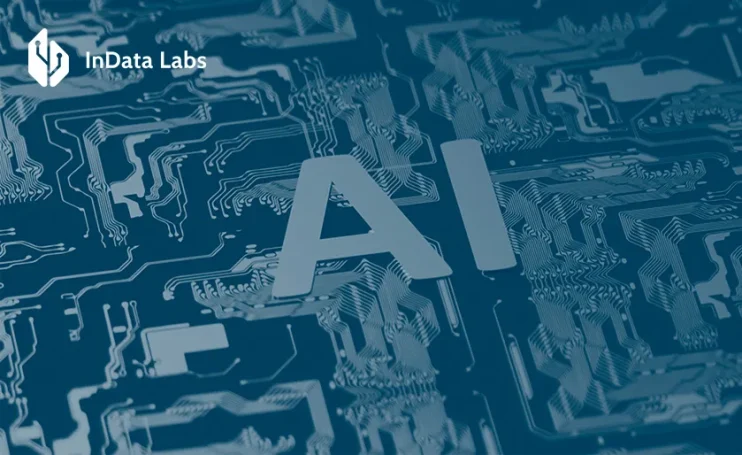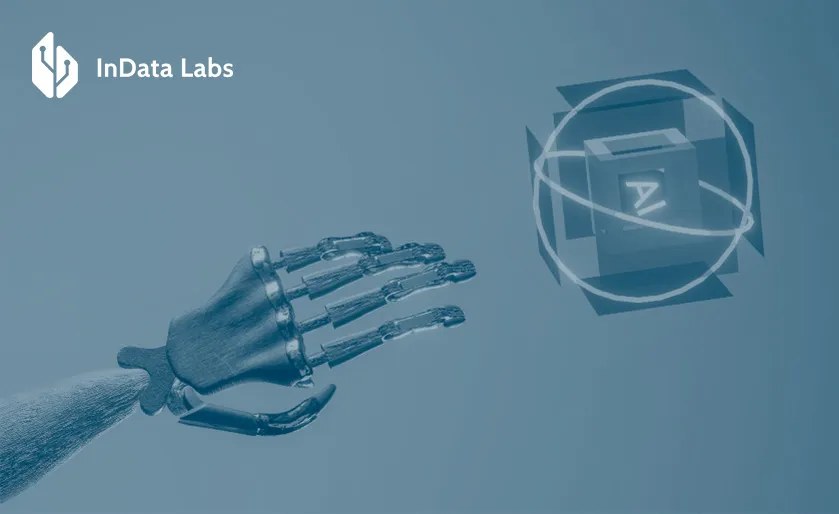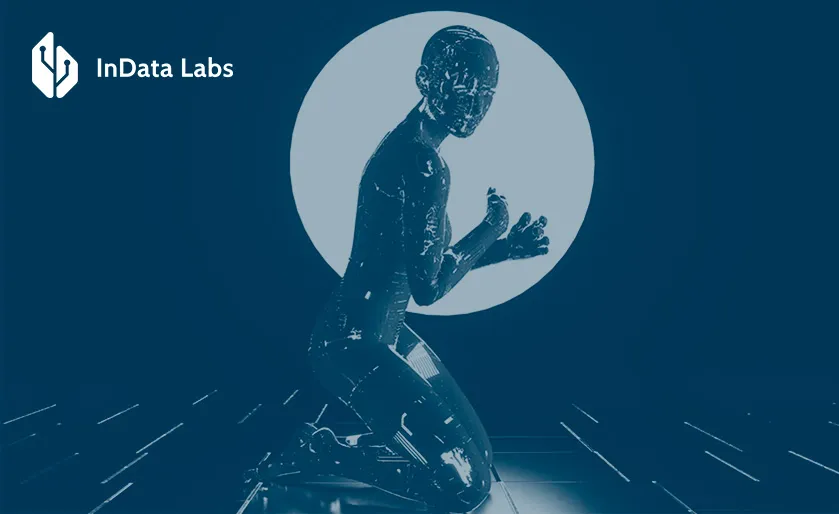Why do some AI systems provide outdated or inaccurate answers? This persistent issue arises because traditional AI models cannot access real-time, relevant information. Realizing how to implement AI with advanced techniques like RAG in generative AI is key to overcoming these challenges. As a result, these models often require improvements or adjustments to deliver reliable outcomes, which is critical for businesses relying on precise and up-to-date insights. For entrepreneurs and small business owners, such shortcomings translate into missed opportunities and inefficiencies.
Enter Retrieval-Augmented Generation (RAG) — a groundbreaking approach in generative AI. By combining advanced AI models with tools that dynamically retrieve relevant information, RAG enables systems to access the most current data on demand. With these capabilities, AI models deliver more reliable outputs.
A recent study by IBM Research reveals that 60% of businesses need help to ensure AI outputs remain relevant to real-time data. This challenge underscores the need for innovative solutions like Retrieval-Augmented Generation (RAG). This article probes how Generative AI RAG addresses these challenges by enabling reliable, up-to-date insights.
What is RAG in GenAI and how does it work?
RAG, or Retrieval Augmented Generation, pairs large language models (LLMs) with tools that pull up-to-date information from external sources. Unlike models that rely on fixed, older data, RAG can access current details. This makes its responses more accurate and relevant—ideal for industries where staying updated matters most.
The RAG model in GenAI integrates two core systems: retrieval and generation, to create precise, context-aware outputs:
- Retrieval system: This system works like a scout, searching external sources—such as databases, web content, or internal files—for the most relevant and up-to-date information to answer a query. By using retrieval-augmented generation, it ensures responses aren’t limited to pre-trained knowledge, bridging the gap between what the model knows and what it needs in real time.
- Generation system: After retrieving the data, the generation system, powered by a large language model (LLM), processes it into clear and context-aware responses. It transforms raw information into polished and accurate outputs tailored to the user’s needs.
LLMs for data analytics play a critical role in processing this real-time data, guaranteeing businesses can extract actionable insights efficiently.
The interplay between these systems transforms AI into a dynamic tool capable to adapt for rapidly changing environments. By pairing the retrieval system’s ability to access real-world data with the generation system’s ability to contextualize and articulate that data, RAG enables outputs to remain precise, actionable, and relevant—qualities necessary for industries like healthcare, E-commerce, and research.

Source: Unsplash
Unleashing strategic benefits with RAG generative AI
For businesses, the value of AI lies not just in automation but in its ability to deliver meaningful, actionable outcomes. RAG for generative AI shifts the paradigm by enabling AI systems to tap into real-time, relevant data, making them more than just static tools.
This collaboration between RAG and generative AI translates into measurable business benefits: decisions grounded in today’s facts, customer interactions shaped by the latest insights, and operational processes guided by a continuous flow of accurate information. Businesses leveraging Generative AI applications are already realizing these transformative benefits.
Mitigating hallucinations in AI outputs
A persistent challenge for traditional AI systems is hallucination – producing incorrect or nonsensical answers due to reliance on incomplete or outdated data. RAG directly addresses this issue by anchoring outputs to real-time, verified sources.
For example, in healthcare, RAG generative AI retrieves trusted guidelines and the latest research to provide recommendations that reflect current findings. This minimizes the risk of errors, especially in critical domains like diagnostics or legal advice, where precision is paramount. Similarly, in customer service, RAG-powered AI chatbot verifies that chatbots deliver accurate and context-aware responses, building trust and improving user satisfaction.
Scalability with external knowledge bases
RAG’s integration with external knowledge bases enables businesses to scale their AI systems without compromising performance. Whether retrieving insights from structured corporate repositories or unstructured public databases, RAG confirms fast and accurate access to information.
For instance, organizations can use Big data analytics solutions in tandem with RAG-powered search applications to sift through vast amounts of data, deliver precise, actionable results in seconds.
Key advantages for businesses
Industries which use GenAI with RAG are already seeing boosted productivity and efficiency in their operations. Moreover, technology delivers a range of strategic benefits, empowering businesses to achieve greater efficiency, accuracy, and adaptability:
- Improved decision-making: Real-time, verified data guarantees AI outputs align with the latest market trends, customer preferences, and operational requirements, supporting informed decisions in industries such as healthcare, finance, and retail.
- Increased efficiency: RAG reduces the time and effort needed to locate critical information, streamlining processes like product recommendations, legal research, and customer support. This results in lower operational costs and higher productivity.
- Improved accuracy: Healthcare and legal sectors particularly benefit from RAG in generative ai because of its precision and ability to minimize errors.
- Personalized customer experiences: Integrate up-to-date data, RAG enables businesses to deliver tailored customer interactions, foster loyalty, and boost conversion rates.
- Scalability across knowledge domains: RAG’s ability to integrate with large-scale knowledge bases supports seamless growth, securing that businesses can expand their AI capabilities effortlessly.
- Adaptability to changing markets: Recognition of the GenAI RAG meaning helps industries fully integrate this transformative technology to regulatory updates, market shifts, or emerging customer needs.
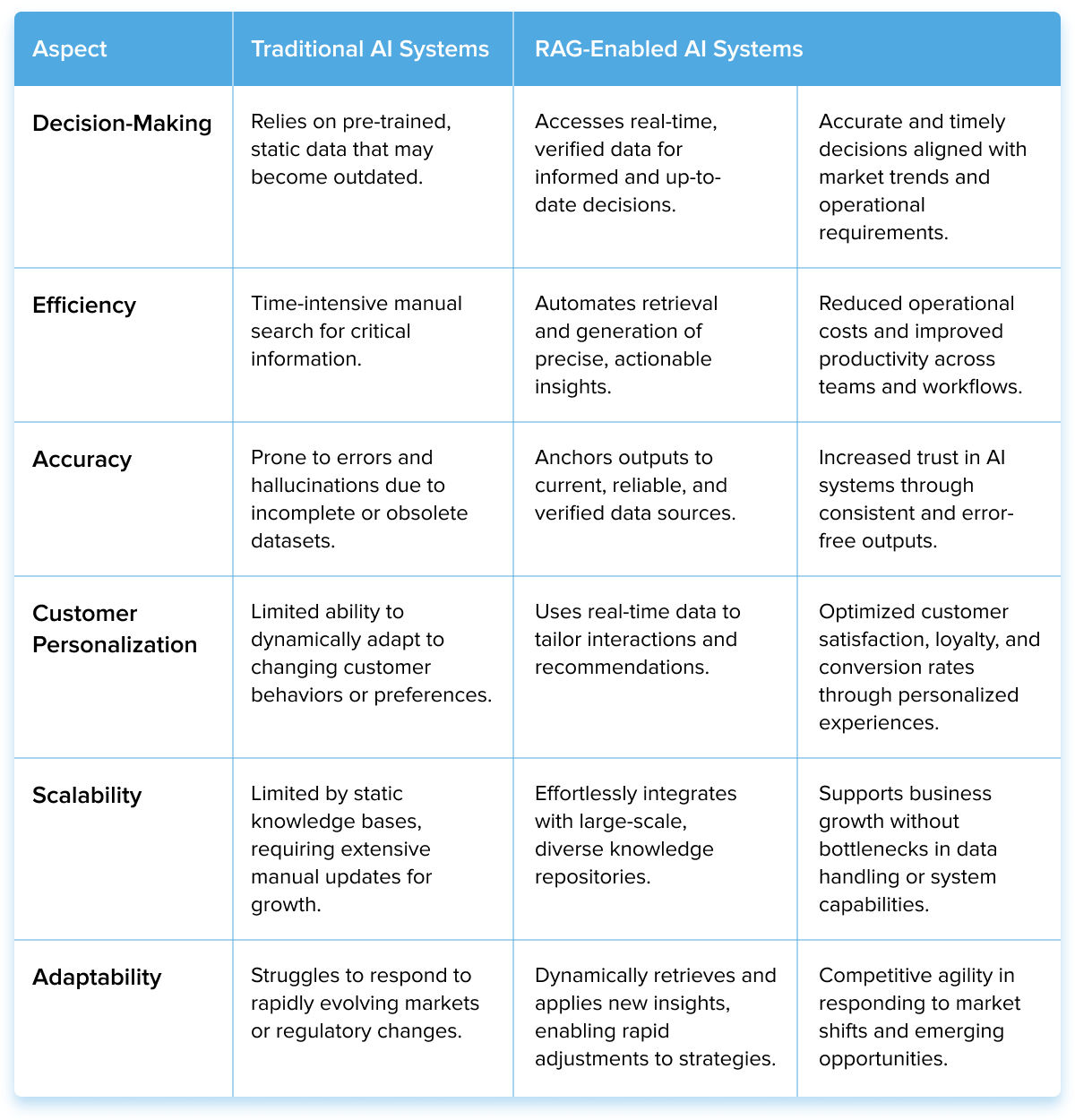
Challenges of implementing RAG
While GenAI and RAG offer transformative potential, its implementation presents several critical challenges that organizations must address:
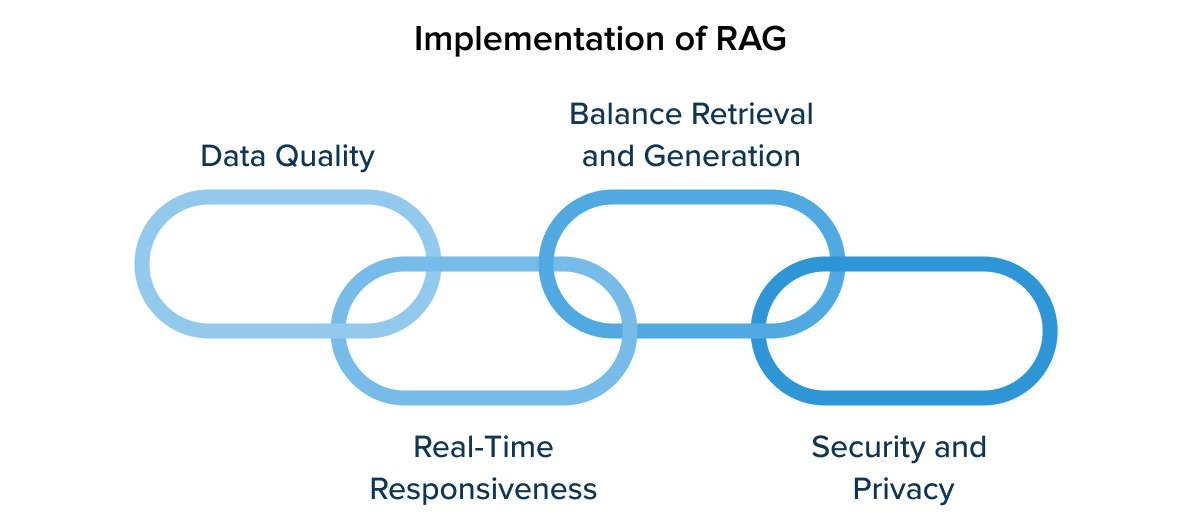
- Data complexity and quality. Verify the retrieved information is accurate, unbiased, and contextually relevant by applying rigorous data validation and preprocessing. Combining diverse data sources—such as public databases and proprietary repositories—can introduce inconsistencies, making effective data management important for system reliability.
- Real-time responsiveness. Achieving the speed required for real-time applications like customer support or healthcare demands optimized retrieval algorithms and efficient database management. High latency can erode trust and limit RAG’s utility in time-sensitive environments.
- Balance retrieval and generation. The dual demands of retrieving relevant data and generating coherent responses require important computational resources. Striking the right balance is critical for delivering smooth user experiences, especially in applications like chatbots and decision-support tools.
- Security and privacy. Integrating external data introduces risks in fields like healthcare and finance, where data breaches or regulatory non-compliance can have severe consequences. Encryption, anonymization, and strict access controls are necessary to protect sensitive information and maintain user trust.
By predictively addressing these challenges through optimized systems, durable safekeeps, and strategic implementation planning, organizations can maximize the benefits of RAG while minimizing its risks.
Best practices and future of GenAI RAG model
RAG’s power lies in its present capabilities and growth potential. To maximize their effectiveness, companies with generative AI should concentrate on integrating high-quality data sources and optimize retrieval systems for speed and accuracy.
As the generative AI RAG model continues to evolve, emerging trends like multimodal integration – combine text, images, and other data formats – are poised to expand its applications further. By embracing these innovations, businesses can harness RAG to maneuver the complexities of a rapidly changing technological ecosystem.

Source: Unsplash
- Identify relevant external knowledge sources. The effectiveness of GenAI RAG depends on the quality of its data sources. Organizations must prioritize identifying and integrating trusted, up-to-date repositories, such as industry-specific databases or research platforms. Reliable external knowledge sources guarantee AI outputs are accurate and relevant, which reduces errors and updates credibility.
- Optimize retrieval systems for performance. Speed and precision are necessary for RAG GenAI systems to function productively. Fine-tune retrieval algorithms – like semantic search and vector ranking – can help AI find and process relevant data faster. This optimization is particularly critical in industries where quick decision-making creates a competitive edge.
- Integrate RAG with existing AI models. Integration of RAG with enterprise AI workflows through established artificial intelligence integration practices assures a seamless transition and maximizes value.
- Develop custom RAG solutions. Tailored AI development confirms the system aligns with specific business goals, delivering optimal results.
- Continuously update and monitor knowledge systems. Keep RAG systems effective by regularly updating and monitoring data sources. Outdated information can lead to errors that impact decisions in industries like healthcare or finance, where precision matters most. By building a process for ongoing updates and quality checks, businesses can maintain their AI systems to stay accurate, relevant, and ready to adapt to change.
- Test for accuracy, relevance, and scalability. Testing guarantees RAG systems deliver accurate, relevant, and scalable results. Businesses can identify potential gaps and fine-tune performance by running simulations based on real-world scenarios. For instance, stress testing a customer service chatbot with high query volumes confirms it remains responsive and reliable. This prepared approach helps organizations build trust in their AI systems while preparing them to handle growth and complexity.
- Expand knowledge retrieval efficiency. Improving the efficiency of retrieval augmented generative AI is important to make systems faster and more effective. Techniques like semantic search or vector databases allow AI to find the right information in seconds, even when dealing with large datasets. In enterprise environments, this speed certifies teams can access key insights quickly, enabling faster decisions and better outcomes.
- Combine RAG with multimodal models. The future of RAG lies in its ability to integrate with multimodal AI systems, which combine text, images, and other data formats. RAG’s ability to blend with multimodal models paves the way for creative industries, healthcare diagnostics, and augmented reality applications, where more prosperous, nuanced outputs are possible.
- Study new use cases in emerging technologies. Emerging technologies like augmented reality (AR) and the Internet of Things (IoT) present exciting opportunities for RAG. RAG can augement user experiences and drive innovation in these rapidly evolving fields by supplying real-time, context-aware data.
Adherence to these best practices guarantees the successful implementation of RAG alongside the adoption of innovations like multimodal models and IoT applications.
Conclusion
RAG represents a breakthrough in generative AI, transforming how systems use real-time data to deliver accurate, context-aware outputs. As technology evolves, investment in generative AI will enable businesses to build customized solutions adapted to their unique needs.
By adopting these advancements and aligning with future trends, organizations can unlock more critical potential for personalization, operational efficiency, and adaptability. Businesses that embrace RAG for GenAI today will stay ahead of the curve and set new standards for AI-driven innovation in their industries.
About the Author
Joanna Carter is a seasoned writer with several years of experience. Joanna specializes in crafting insightful content on Business, Data Science, and AI, helping readers maneuver complex topics with clarity and practicality.
